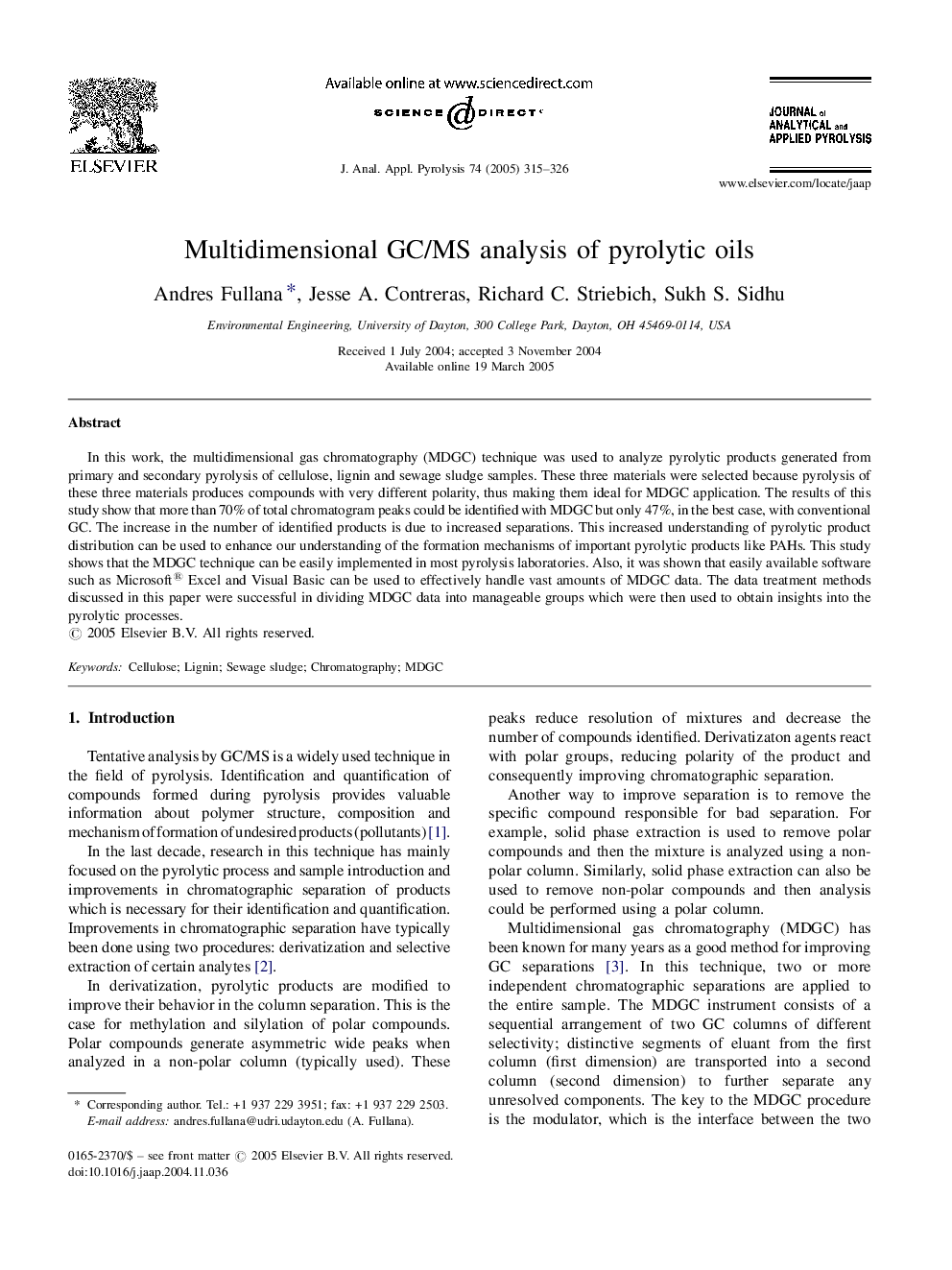| Article ID | Journal | Published Year | Pages | File Type |
|---|---|---|---|---|
| 9748205 | Journal of Analytical and Applied Pyrolysis | 2005 | 12 Pages |
Abstract
In this work, the multidimensional gas chromatography (MDGC) technique was used to analyze pyrolytic products generated from primary and secondary pyrolysis of cellulose, lignin and sewage sludge samples. These three materials were selected because pyrolysis of these three materials produces compounds with very different polarity, thus making them ideal for MDGC application. The results of this study show that more than 70% of total chromatogram peaks could be identified with MDGC but only 47%, in the best case, with conventional GC. The increase in the number of identified products is due to increased separations. This increased understanding of pyrolytic product distribution can be used to enhance our understanding of the formation mechanisms of important pyrolytic products like PAHs. This study shows that the MDGC technique can be easily implemented in most pyrolysis laboratories. Also, it was shown that easily available software such as Microsoft® Excel and Visual Basic can be used to effectively handle vast amounts of MDGC data. The data treatment methods discussed in this paper were successful in dividing MDGC data into manageable groups which were then used to obtain insights into the pyrolytic processes.
Related Topics
Physical Sciences and Engineering
Chemistry
Analytical Chemistry
Authors
Andres Fullana, Jesse A. Contreras, Richard C. Striebich, Sukh S. Sidhu,
